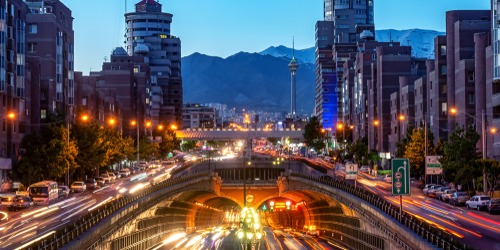Iran's challenges could reset status quo, foreign equation
Iran is facing pressing economic and social challenges, exhibiting signs of state failure, according to analysts.
The country’s existing problems were exacerbated by the recent military clash with Israel.
“The conflict imposed significant economic costs on Iran, estimated between $24-35 billion, or 6.3-9.2% of its GDP,” Khalid Al Terkawi, economic consultant at Jusoor Studies Centre told Salaam Gateway.
“It exacerbated existing challenges like sanctions, mismanagement, and chronic shortages. This led to currency devaluation, severe trade deficits, and high inflation. Essential goods shortages and worsening power outages also occurred.”
A 12-day conflict erupted on June 13, after Israel launched air strikes on Iranian miliary and nuclear sites, targeting its top military brass and several nuclear scientists as well as prompting Iranian military retaliation. The US entered the clash on June 22 and later brokered a ceasefire after Iran attacked its airbase in Qatar.
Iran was already contesting with grave economic challenges prior to its military showdown with Israel. The International Monetary Fund projects Iran’s economy to grow by a non-descript 0.3 per cent in 2025, downgraded from the fund’s last October forecast of 3.1 percent. It is expected to grow 1.1 per cent next year, the fund said in May.
Inflation is expected to soar from 32.6 percent last year, to 43.3 percent in 2025, before easing slightly to 42.5 percent next year, the IMF said in April.
Kristalina Georgieva, the fund’s managing director told Bloomberg TV this month that the US attacks on Iran were another source of uncertainty in an already highly uncertain environment.
Iranian rial plummeted with its free-market exchange rate at about 95,700 rials to a dollar at 4am Iran time on June 13, according to Bonbast.com.
Tehran’s stock exchange reopened on June 28 after a nine-day closure, with more than 99% listed companies trading in red on the first day. The main index reportedly fell by 62,503 points, closing at 2,922,101.
A state collapse can trigger a change in government, as the state loses its ability to perform, says Al Terkawi.
“Mechanisms include the emergence of new independent states, replacement of the existing government, or internal conflicts. Iran exhibits high state fragility, with its 2024 Fragile States Index score is 82.90. Following the conflict, the regime intensified internal security crackdowns, including mass arrests and executions, to suppress dissent.”
The conflict also delivered a "severe blow" to the West Asia tourism sector, leading to widespread flight cancellations and a sharp decline in international arrivals to Iran, he added.
The country welcomed 7.4 million foreign tourists in the 12 months, starting March 21, 2024, with the aim to increase the figure to 15 million within the next four years. The recent clash may dent Iran's tourism plans, at least in the short-term.
An unexpected change in internal Iranian politics could also dramatically alter the country's foreign policy equation and reset the gameplan for foreign intervention.
"Does something happen to the Iranian regime that would be a game changer?” asked Jon Finer, distinguished fellow at the Columbia Center on Global Energy Policy in a June 26 webinar. "A coup of some kind, a collapse of some kind, a popular uprising?”
Story updated on August 05, 2025

Editor